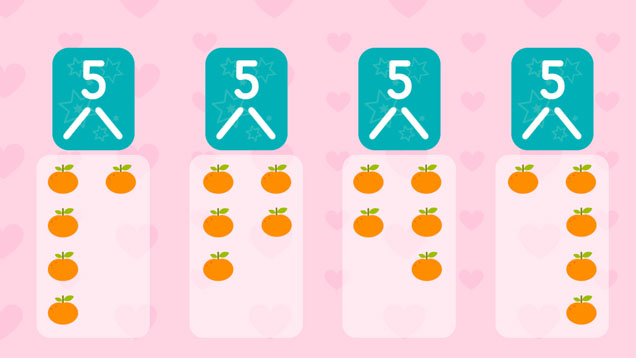Add to Your Abilities, Subtract from Your Stress
by Tom, Jun 07 2022

What should you do if your child is struggling to learn addition and subtraction? Step one is critical: don't worry! Just like Rome, your child's foundational skills won't be built in a day; after all, to put together numbers and take them apart again is no simple thing. How, then, can they exercise their skills and improve? Read this article to learn the secret to mastering addition and subtraction, starting with the basics.
As adults, we take for granted that we already know how numbers are added together, subtracted, and so on. For kids, understanding the relationship between the whole and the parts of something is the starting point for addition and subtraction. Mastering this 'whole and parts' approach will do more than just improve your child's ability to learn to add and subtract well; research shows there's a strong connection between learning to divide and combine numbers and adding and subtracting them. Best of all, it's simpler than it sounds!
Getting Started
When learning through play, there's no need for complicated rules or expensive toys. You can teach your child the division and combination of numbers by playing with any small objects you have at home; buttons, paper clips, oranges, and so on. Having something they can put their hands on and move around freely helps make abstract ideas into something concrete. Now you're ready to play.
Take a look at the photo below. To learn how to divide a 'whole' of 5 into 'parts,' you can prepare 5 blocks and ask your child to divide them into two piles. Then, ask them to arrange the blocks in as many divisions of 5 as they can think of.
Stepping up the Difficulty
After your child has learned the rules and gotten comfortable with the game pieces, it's time to get talking about the groups they've made. For example, if they divide 5 blocks into 3 and 2, you can tell them that, "5 can be divided into 3 and 2, 3 and 2 added together make 5." You can use this same example to illustrate subtraction, as well. Cover 3 of the blocks with your hand and ask, "If I take away these 3 blocks, how many blocks are left?"
The main purpose of playing this game with children is to help them discover that numbers have the property of being 'divisible but constant.' 5 blocks can be divided into groups of 1 and 4 or 2 and 3, but no matter how they are divided or put together the total number remains the same when they are added together.
Keeping it Fresh
Now that your child has played a few rounds of this game, it's helpful to mix things up to maintain their interest. If you played the game with blocks today, for example, play it with strawberries tomorrow. The change in pieces adds a fun twist on the established rules, and makes for a tasty snack when your child answers correctly! You can give your child some freedom to choose what items you'll play with on a given day, too - letting them choose from a selection of things makes them feel important and listened to.
You can take the game a step further, too, by letting your child play the role of teacher. Let them arrange the game pieces and ask you to divide them, and to ask how they might be added together and subtracted. If your child is especially confident in their abilities, pretend you don't know the answer; see if they can correct you!
Patience, Practice, Perfection
Learning to divide and combine numbers is not a simple task. It will take some time and effort, and a lot of patience. If things get frustrating, just take a break and come back to it later. Remember, it's an investment in your child's future; setting the foundation of these lifelong skills today sets them up for success tomorrow.
